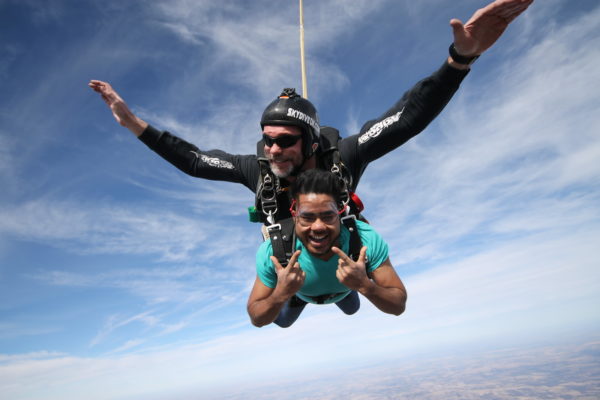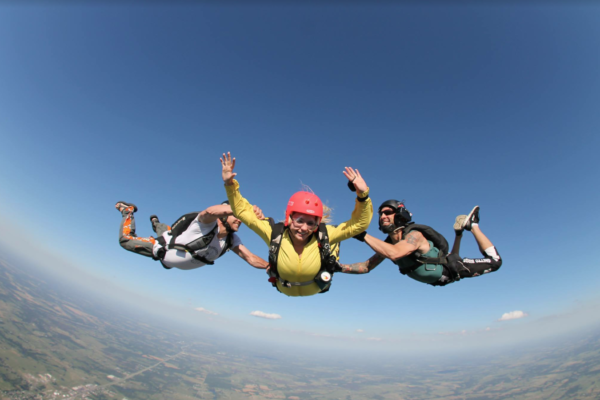How to Get Your Skydiving Certification in Oklahoma
Monday, January 31, 2022
If you’ve landed on this blog post, it’s likely you’ve been doing some serious daydreaming! You want to become a skydiver! Welcome to the club! Our owner and team all started where you are right now and we’re happy to say that it’s completely possible to realize your dreams even if you don’t consider yourself an adrenaline junkie (you don’t have to be). Skydiving is all about fun, empowerment, joy and peace and it’s why we became licensed skydivers ourselves – feeling good, feels good!
There’s a lot to know about how to become a certified skydiver, and our goal is to simplify the understanding of this process as it can be information overload. Becoming a certified skydiver involves five distinct phases:
- Enroll and complete AFF
- Make solo jumps and complete the A-License Proficiency Card
- Learn to Pack
- Pass the Tests
- Submit Your Paperwork!
Let’s begin with the strange acronym that you’ll see over and over again related to becoming a certified skydiver – AFF.
What is AFF?
AFF is an acronym for ‘Accelerated Free Fall.’ Accelerated Free Fall is the most modern form of skydiver training allowing new skydivers to exit an aircraft between 10,000′ and 14,000′, free falling to 4,000′ and requiring the student to deploy their own parachute.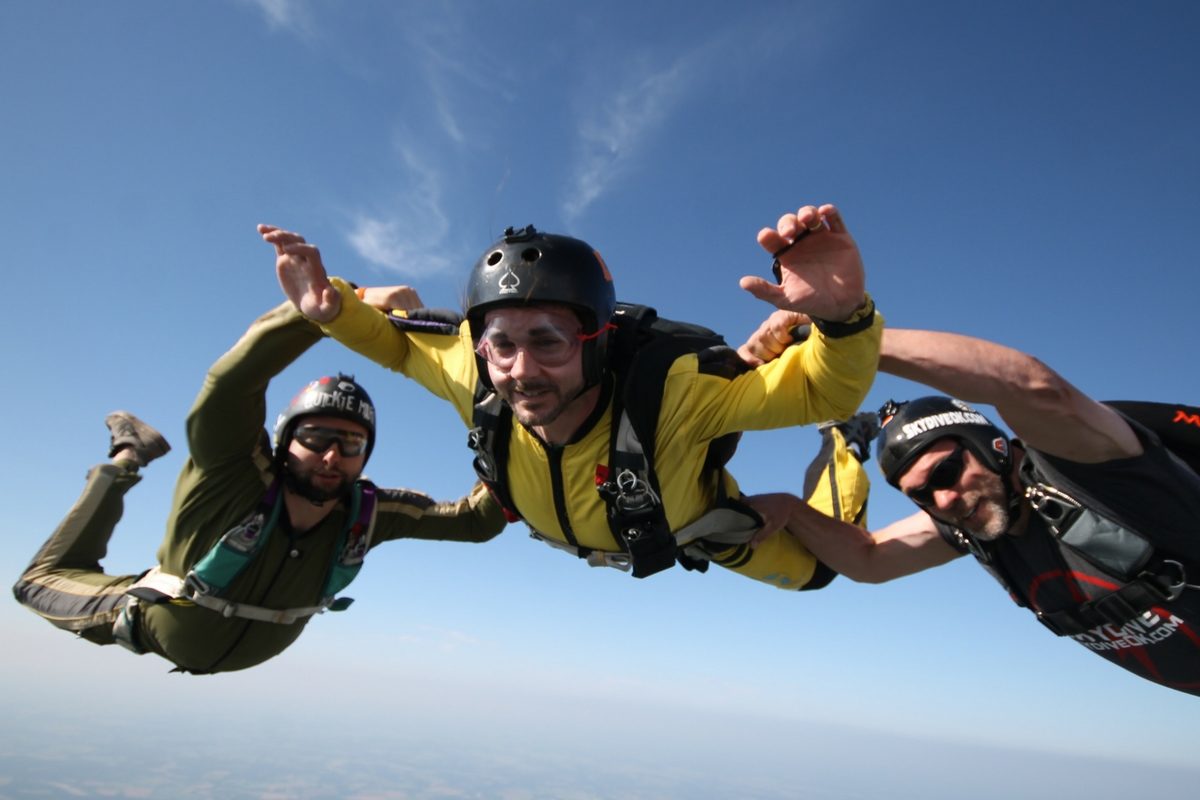
Prior to AFF, the most common training method was known as ‘Static Line.” The static line method involved a low altitude exit between 3,000′ and 4,000’. Upon exiting, a static line connected to the aircraft and the jumper’s main parachute would open the parachute immediately, resulting in no free fall for the student.
This way of teaching is less expensive, but takes much longer to progress to free fall and is why AFF is so advantageous. The AFF method accelerates the process to experience free fall from jump number one, hence the strangely long term.
Skydiving Certification - What To Know
- What does it mean to be a certified skydiver?
To be a certified skydiver means to get a skydiving license. In skydiving, there are four skydiving licenses to achieve: A, B, C and D. The goal of a skydiving student is to attain the A license.
- Do you acquire your A-license at the completion of AFF?
No. The AFF course teaches an individual the foundational skills to skydive solo in seven jumps. Thereafter, additional skills need to be acquired to earn an A license and be deemed a certified or “licensed skydiver.”
Earning an A license requires an individual to:
- Complete 25 jumps
- Complete the skill demonstration tasks on the A-license Proficiency Card.
- Complete five group freefall skydives involving at least two participants.
- Pass the USPA-developed written and oral USPA A-license exams.
- Receive the signature and official stamp on the USPA A License Proficiency Card.
- Complete and have the signed USPA A License Proficiency Card validated within 60-days of completion by sending the card to USPA Headquarters. Once validated, USPA will issue a license number that becomes a permanent record of the member.
- What are the components that lead to earning the skydiving license?
To summarize the journey from daydream to licensure, the process can be broken down to five distinct phases:
- Complete the 7 Jump AFF Course
- Make 18 solo skydives with a coach and others to complete the requirements on the A-license Proficiency Card
- Learn to pack a parachute
- Pass the written and oral exams
- Submit your paperwork to USPA and make it official!
- How quickly can you become a licensed skydiver?
There is no black and white answer because it depends on multiple variables – namely the weather and your time commitment. If the weather is favorable and you have the ability to be at the DZ as much as possible, then the program can be completed in as little as four weeks.
It’s important to note that at least one skydive must be made every 30 days in order to stay current and avoid the need to repeat the last completed AFF level. If you’ve completed the AFF program, but haven’t jumped within 30 days, you’ll be required to hire a coach to make a recurrency jump.
- What advice can you offer to help ensure a student gets their skydiving license?
Patience – This isn’t a fast process because weather is likely to cause delays. Don’t fight it – this is part of the skydiving journey. Remember, it’s about having fun and soaking up knowledge!
Planning – Learning to skydive is an expensive undertaking, so budget accordingly.
Being Scared is Okay – You’ll have many mental battles as you swing from “I really want to do this!” to “Am I completely crazy?” We’ve all been there and it’s part of the process. Anything that challenges you will cause you to doubt whether it’s training for a marathon to jumping out of planes!
- Do You Need To Own Your Own Equipment?
No, you do not need to own your own skydiving equipment while becoming a licensed skydiver. The dropzone will supply you with your gear. In skydiving, it’s not recommended that you buy your equipment until after you’ve got your license.
At that point, it’s advised to only buy used gear until your skills advance because you’ll soon outgrow your skills-specific gear in a short time!
- What if I can't afford to learn to skydive, is the dream over?
Many of today’s world champion skydivers started without enough resources to learn! The good news is there are many tasks needed to be done at a dropzone that can be done as trade. These tasks are usually associated with:
- Packing parachutes
- Running manifest
- Working with Ground Ops
- DZ maintenance
Skydiving License Costs
| Learning to Skydive | Costs |
|---|---|
| AFF | $1,800 |
| Solo Jumps to Jump 25 (approximation) | $1,600 |
| Packing Class | $40 |
| USPA License Fee | $36 |
| Total | $3,476 |
Are you ready to begin your journey into the amazing world of skydiving? If so, click the button below and LET’s GO!!!!!!
Recent Blog Posts
All about Skydiving

General
Best Planes for Tandem Skydiving
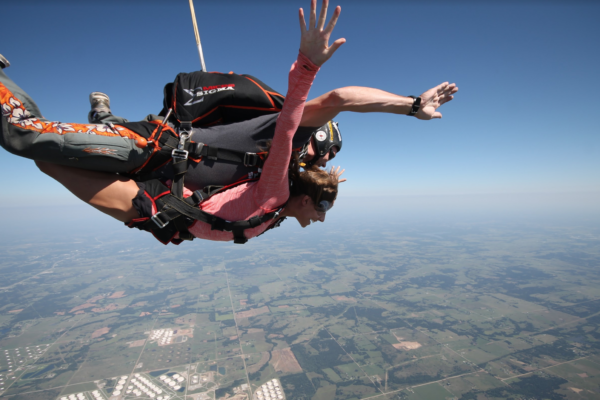
General
What is the Skydiving Age Limit in Oklahoma?
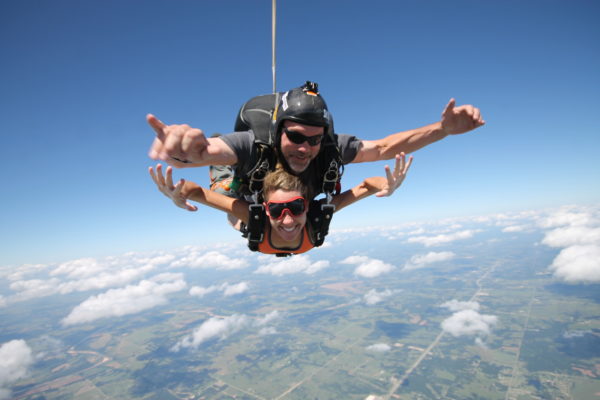
General
Can You Go Skydiving After LASIK?
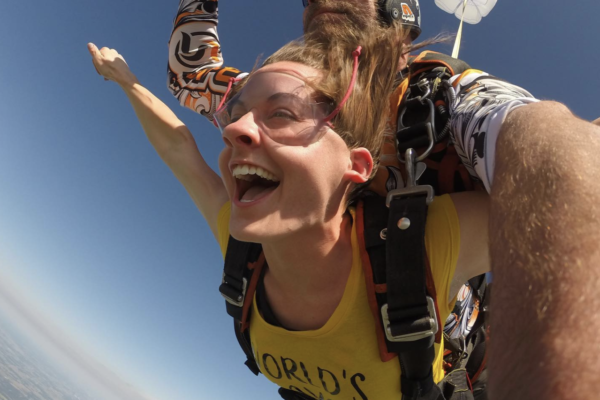
General
How Expensive is Skydiving in Oklahoma?
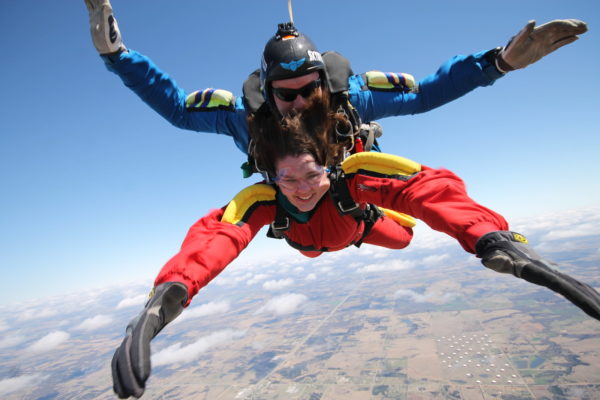
Skydiving
Can Skydiving Be Therapeutic?
Copyright © 2025, Oklahoma Skydiving Center, All Rights Reserved.
DropZone Web Design & Marketing by Beyond Marketing, LLC

